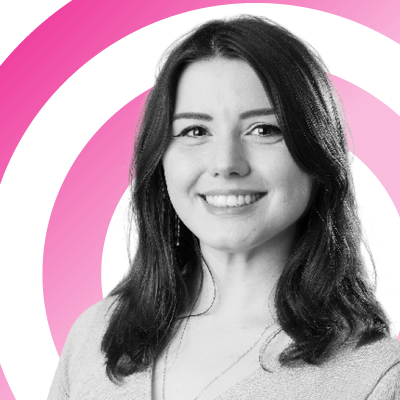Adapt to survive: how a former Disney animator and director rode the wave of digital transformation
“Once the ice was broken, it was a lot easier for me”

It’s been almost 120 years since the first cartoon animation, Émile Cohl’s Fantasmagorie, was made, and the contemporary art form has come a long way since then.
That’s especially true for the last 50 years of animation, which has seen illustrators and animators alike embrace a plethora of new hardware and software tools, including some of the best drawing tablets.
One such artist who witnessed this season of change is Aaron Blaise, former Disney animator whose résumé includes classics from Disney’s “Renaissance” era, such as Beauty and the Beast, The Lion King, Pocahontas, Mulan and Aladdin – he even directed Brother Bear. In a TechRadar interview, Blaise shared his experience and his views of what’s next in the industry now that tools like Procreate Dreams are making animation much more accessible.
Every corner we turn only leads to another
While Blaise is best known for his over 35-year career as an animator, writer and director, he started out wanting to be an illustrator: “I wanted to work for National Geographic [but] when I found out that they freelanced all their work I thought, ‘Okay, I gotta find another path’.”
Luckily for Blaise (and the many fans of his work), Disney was looking for artists and illustrators who they could teach to animate rather than experienced animators.
He says: “Around 1988, I got an internship, became an animator and just fell in love with the whole art form. Lucky for me, I came into the industry at a very good time when we had this new renaissance of content being produced by Disney, and I was on the ground floor for that.”
Blaise witnessed much of the transition from pen-and-paper animation to digital during his time at Disney: “Throughout the 90s, I was able to work on films like Beauty and the Beast, Aladdin, The Lion King, Pocahontas and Mulan, and I directed Brother Bear. What was cool about that time is that we were still doing things the old way – animating on paper and shooting everything on camera.”
Get daily insight, inspiration and deals in your inbox
Sign up for breaking news, reviews, opinion, top tech deals, and more.
This period, referred to as the Disney Renaissance era, followed the success of 1989’s The Little Mermaid, (which so happens to be my all-time favorite movie) – but Blaise says that not a lot changed in terms of animation following the movie’s success. “The only thing that really changed after The Little Mermaid was that we started to digitally color everything, but basically everything else was the same.”
A whole new perspective on things
Instead, what Blaise saw over the 20-or-so years that followed was a progressive digital transition that’s now culminating in a much more accessible and intuitive animation landscape.
At first, Blaise wasn’t exactly on board with transitioning from physical media to digital. “I was really scared of it, and I resisted it for as long as possible.”
“I had a boss named Max Howard who ran our studio in Florida. We were working on Beauty and the Beast and he goes, ’you know, Aaron, in about 10 years, you’re going to be doing all these drawings on a computer screen,’ and I was thinking of big fat TVs. I just couldn't picture it.”
It was only when Blaise was directing and writing a computer generated (CG) film that he realized it was time to move across to digital, he explains. So, he asked Disney for “the biggest Wacom Cintiq available and Photoshop”, which arrived in his office by the next morning, and so it was.
“That was the beginning of my journey. I started learning Photoshop, and then over the years as new software has come out, I've kind of jumped on them. Once the ice was broken, it was a lot easier for me.”
New friends and new places to see
Since moving on from Disney in 2007, Blaise has launched his own educational business, CreatureArtTeacher, where he offers lessons and tutorials to a new generation of animators, including using more accessible software such as Procreate Dreams. He also runs a YouTube channel called The Art of Aaron Blaise where he shares tips and new projects.
“Procreate Dreams could not have come out at a better time. I think the use of CG animation is wonderful; it’s a great tool that allowed a lot of animated filmmakers who didn't draw to get into the field and create their visions. But I think that the industry has steered away from hand-drawn animation long enough; there's a big hunger for it now.”
The fact that the app is so financially accessible is key to the future of hand-drawn animation, he says: “We're gonna see a surge – and I'm already seeing it across YouTube and Tiktok – this wave of new pieces of animation being done in Dreams.”
To keep the tradition of hand-drawn animation alive, Blaise will also often live stream his work process, and to his surprise will frequently see questions from his viewers about even the most basic animation practices like flipping through the pages to see the movement of his work. “Back in the 90s, everybody kind of knew how animation was done, even if you weren't an animator, but that's kind of lost now and it surprises me.”
However, Blaise is excited by how software like Procreate Dreams mimics some of the original animation process – enough so that he can animate digitally just like he used to with pen and paper.
Certainly, that’s the hope. The scope of artistic expression possible in hand-drawn animation is vast, vaster even than it was 30 years ago, and I for one can’t wait to see what the next generation of animators and illustrators come out with.
You might also like

Josephine Watson (@JosieWatson) is TechRadar's Managing Editor - Lifestyle. Josephine is an award-winning journalist (PPA 30 under 30 2024), having previously written on a variety of topics, from pop culture to gaming and even the energy industry, joining TechRadar to support general site management. She is a smart home nerd, champion of TechRadar's sustainability efforts as well and an advocate for internet safety and education. She has used her position to fight for progressive approaches towards diversity and inclusion, mental health, and neurodiversity in corporate settings. Generally, you'll find her fiddling with her smart home setup, watching Disney movies, playing on her Switch, or rewatching the extended edition of Lord of the Rings... again.